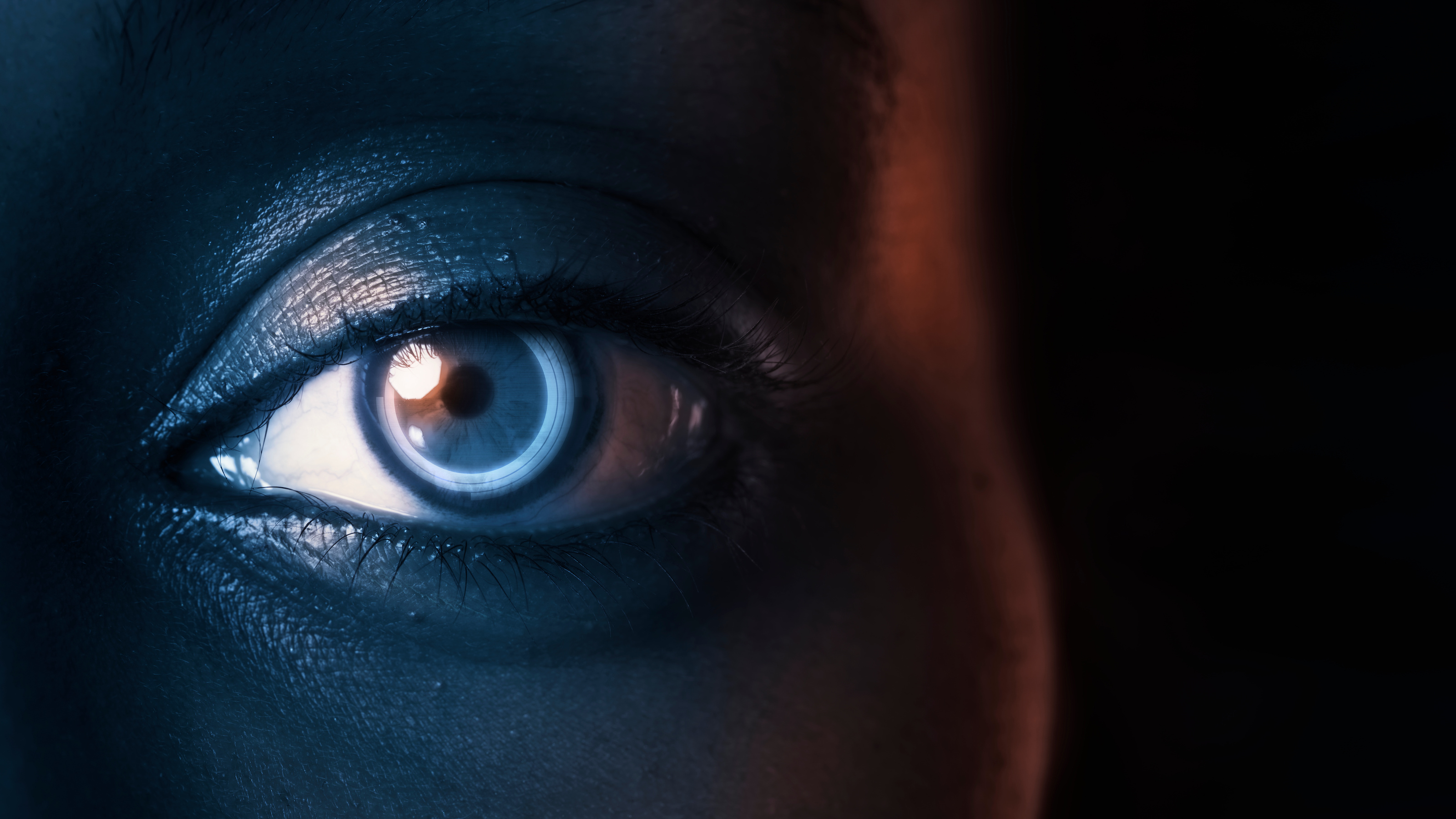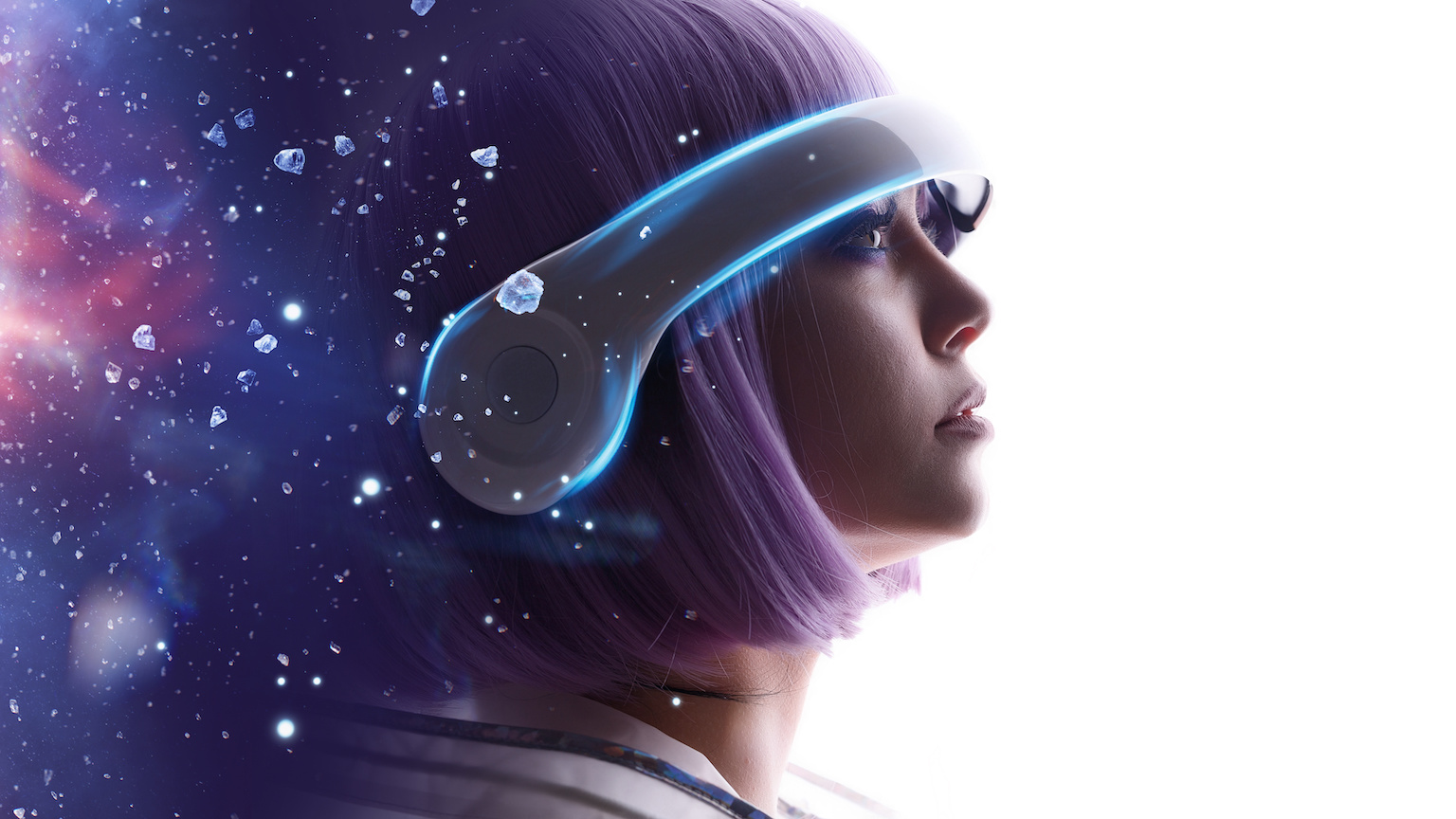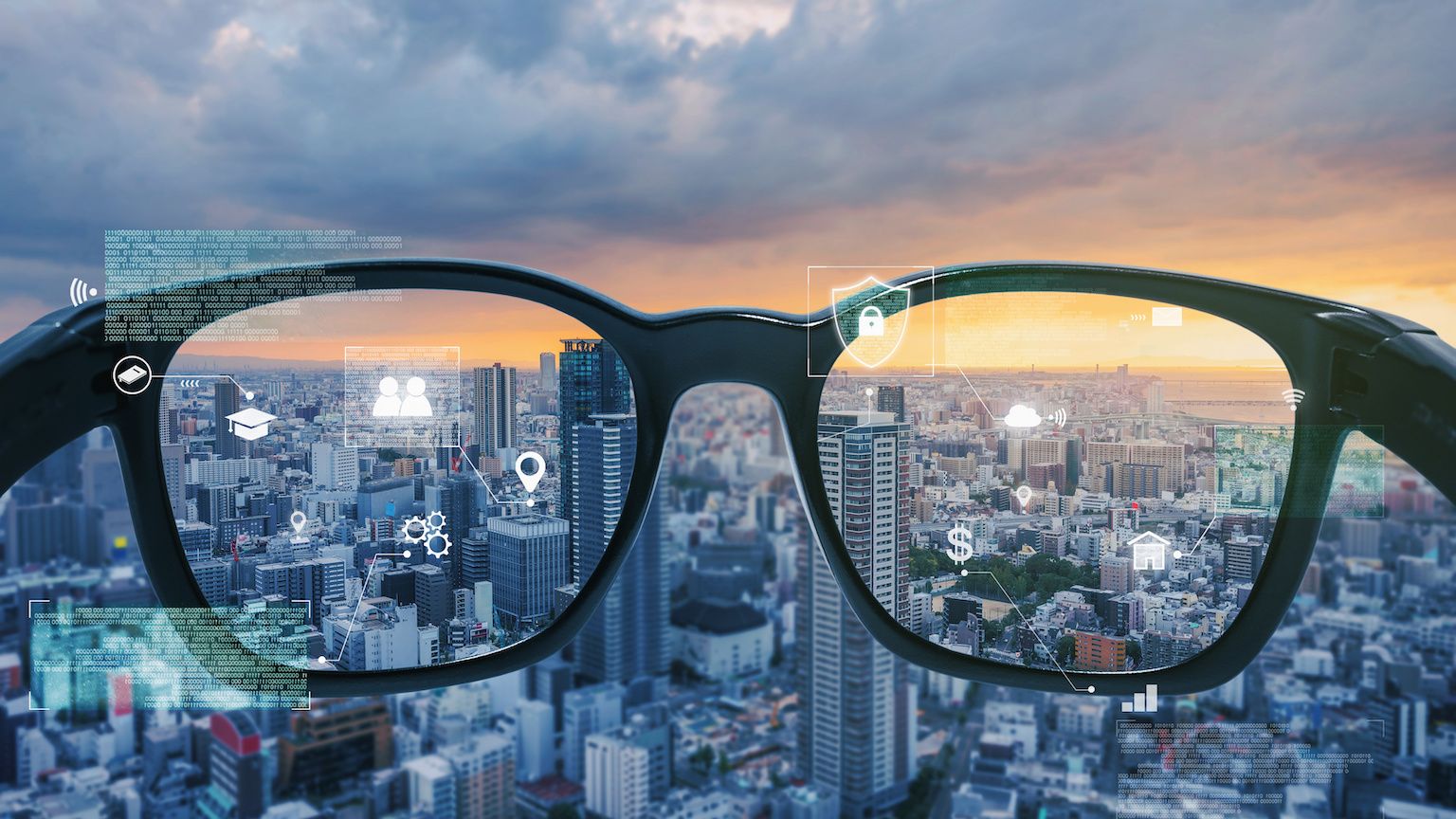Huge milestone as human subject wears augmented reality contact lens for first time

- For the very first time, an augmented reality (AR) contact lens was worn on the eye of a human subject.
- AR contact lenses pose wildly difficult engineering challenges, the biggest of which is finding a way to provide these tiny devices with power. A company called Mojo Vision has done that.
- One day, we will look back at the years when people walked down the street, necks bent, staring down at little screens in their hands as an absurdly primitive way to interact with information.
Three decades ago, the first group of human subjects interacted with a mixed reality of real and virtual objects. They did this by climbing into a large upper-body exoskeleton, pressing their face to a vision system hanging from the ceiling, and manually performing tasks that required them to engage both physical and simulated objects. They were testing a prototype augmented reality system at Air Force Research Laboratory (AFRL) known as the Virtual Fixtures platform. The hardware filled half a room and cost nearly $1M, but it worked — showing for the first time that AR could boost human performance in real-world tasks.
Last week, an important new milestone was achieved in the field of AR, and it highlights how far the technology has come over the last 30 years: the first authentic test of an augmented reality contact lens. It was conducted in a research lab at Mojo Vision in Saratoga, California. No, it wasn’t a crude bench test of oversized hardware with wires dangling. This was a genuine test of an AR contact lens worn directly on the eye of a human subject for the very first time.
A wildly difficult engineering challenge
As someone who has been involved in AR from the early days, I need to highlight the importance of this new milestone. Building a wearable augmented reality contact lens is a wildly difficult engineering challenge. When I say this, people usually ask about the display technology. Sure, the ability to put a high resolution display on a tiny transparent lens is difficult, but it’s not the most challenging piece of the puzzle. The harder issue is that this tiny lens, which needs to sit comfortably on the human eye, has to communicate wirelessly with external devices and be fully powered without a physical tether of any kind. That is a daunting task, and yet it is what Mojo Vision achieved in their latest demonstration.
We will look back at the years when people walked down the street, necks bent, staring down at little screens in their hands as an absurdly primitive way to interact with information.
Louis Rosenberg
According to Mojo Vision, the prototype lens includes medical grade micro-batteries. It’s unclear what the battery life is for the current prototype, but according to the company, their product goal is power management that enables all-day wear.
Of course, their display technology is impressive too. According to the company, the Mojo Lens has a 14,000 pixel-per-inch MicroLED display with a pixel pitch (the distance between adjacent pixels) of 1.8 microns. For context, an iPhone 13 with a Super Retina XDR Display has 460 pixels per inch resolution. In other words, the Mojo Lens hardware has about 30 times the pixel density of a current iPhone. In addition, these lenses include an ARM processor with a 5GHz radio transmitter, along with an accelerometer, gyroscope, and magnetometer to track eye movements. And all of this sits directly on the human eye.
AR contact lenses are the future
Still, many years of development will be required to get from today’s prototypes to mass market consumer products that bring immersive AR capabilities to people around the world. I predict that AR eyewear, first as glasses and then as contacts, will eventually replace the mobile phone as our primary interface with digital content. Further, I believe augmented reality will completely change our relationship with information, transforming digital content from discrete artifacts we selectively access into seamless features of our physical world.
A few years ago, I wrote a futurist piece entitled “Metaverse 2030” that portrays what life will be like when AR contacts become commonplace — a world where mainstream consumers get fitted for new contacts whenever they sign up for a mobile subscription. When that day comes, we will look back at the years when people walked down the street, necks bent, staring down at little screens in their hands as an absurdly primitive way to interact with information. Will this happen in the next decade? Only time will tell, but the achievement from Mojo Vision takes us a large step closer.





